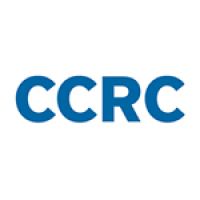By Maria Cormier, Julia Raufman, Jessie Cinelli, and Karen Musa
Noncredit workforce education courses attract large numbers of adult students who are returning to college to upskill within their current jobs or to transition into new ones. Noncredit courses also function as a bridge to enrollment in for-credit courses and programs, becoming the first step into college—and higher future earnings—for many low-income students. Yet noncredit programs generally function separately from the credit departments of community colleges, and prior research suggests that few colleges have taken steps to improve the alignment of credit and noncredit education programs. This division can confuse students and limit their educational opportunities.
Over the past five years, the Capital One Foundation has partnered with 13 community colleges across six states engaged in efforts to improve credit and noncredit alignment. With a grant from the foundation, the colleges have been learning from each other and experts in the field and exploring how they and other community colleges can position themselves as leaders in local workforce development.
One of the colleges, Collin College in Texas, used its grant to align credit and noncredit programs through linked courses, which are taught by credit faculty who hold credit and noncredit students to the same learning outcomes and performance expectations. Students then have the option of petitioning to turn the continuing education units into college credit. The linked courses, which are cross-listed in the college’s learning management system, allow students to test the rigors of a college-level course and gauge whether they want to move forward in that area of study. Linking courses provides students various entry points into education and career paths, and it opens the possibility of increased self-efficacy and retention in programs of study. Underlying this approach is the belief that if an individual begins their time at Collin College on the noncredit side and then decides to move into a degree plan on the credit side, the work completed on the noncredit side should be recognized.
As the 13 colleges began to explore and implement different strategies, they identified a set of common barriers to aligning noncredit and credit programs. One of the most significant challenges is limited data infrastructure. Many colleges don’t register noncredit students in their primary database, and they generally have been unable to integrate multiple registration systems. Colleges, therefore, know very little about their noncredit students, including whether they matriculate into credit-bearing programs or disconnect from the college after completing a noncredit course.
The grantee colleges identified several ways information about enrollments, services, students themselves, and local employers is essential to creating stronger alignment between credit and noncredit programming.
- Institution level: Data can be used to track enrollments of noncredit students, as well as to assess the success of initiatives targeting credit opportunities for noncredit students, advising and support, and curricular alignment. Colleges should take a collaborative approach to planning and assessing such initiatives and involve stakeholders from offices across the campus, including administration, academic affairs, enrollment, student affairs, institutional research, and information technology.
- Student level: In addition to data collection and tracking, colleges need to know more about why students are enrolling in noncredit programs; their educational and employment backgrounds; their needs, which are often different from those of matriculated students; and their satisfaction with the services they are provided. Knowing more about these students can help colleges identify which students would like to matriculate into credit-bearing academic programs and then support them in those efforts.
- Industry level: To understand their local labor market, colleges can use labor market information—data on employment, wages, skills, competencies, and industry certifications—and gather additional information through advisory boards. Together, these data can inform the development of new academic programs.
Drawing upon these insights, in 2019 a subset of five grantee colleges formed a working group to think about how to help colleges develop, evaluate, and improve policies and practices geared toward aligning credit and noncredit programs. Through regular meetings, the working group outlined a set of guidelines that institutions may want to consider.
- Establish institutional support for alignment practices: Colleges should develop evidence-based approaches to alignment, create clear goals and measurable outcomes for aligning credit/noncredit workforce programs, and dedicate senior staff to alignment improvement.
- Engage faculty and staff: Colleges should provide faculty and staff the time and resources needed to develop good alignment practices, such as using linked courses or prior learning assessments, and share information about alignment processes across departments to foster transparency and collaboration.
- Advise students about credit and noncredit options: It is important to offer accurate, easily accessible content on a college’s website for noncredit students seeking information about credit courses. This content should explain program options and employment opportunities related to each area of study. Colleges should also offer in-person advising to students on credit and noncredit opportunities that can build their skills and help them explore career options, such as credential/certification programs that allow students to work in jobs related to their field of study while they’re in college.
- Generate and share data: Colleges should also create data practices and metrics to measure institutional progress and help make decisions about alignment; develop one unified data system that includes data about students taking both credit and noncredit courses; and give faculty, staff, and departments access to data tools to inform decision-making about alignment policies and practices.
These suggested guidelines may be used as a framework to support colleges’ efforts toward aligning credit and noncredit programs. Institutions can use this framework to identify relevant current practices at their college and develop a plan for modifying them or implementing new ones. Discussions about alignment should help build a shared understanding of the ways a college does and does not support noncredit students, and motivate college leaders to engage the wider college community in planning and improving.
From the beginning, a central goal of the Capital One project has been to leverage the colleges’ experience and knowledge to produce practical lessons for the field. This is all the more pressing in light of the COVID-19 pandemic. The economic recovery from the pandemic is likely to be slow and sporadic. As millions of displaced workers seek to upskill and better position themselves for a labor market rebound, community college workforce programs should see increased enrollments, particularly those that award shorter-term credentials. This calls for a coordinated effort across institutions and systems to create seamless alignment between noncredit and credit programs and ensure that they both reflect employer’s shifting needs and confer credentials with strong labor market returns. Not only will such efforts enhance the economic security of students and their families, but they will also strengthen the community college business model, helping to ensure they fulfill their critical mission.
Maria Cormier is a senior research associate at CCRC and Julia Raufman is a research associate at CCRC. Jessie Cinelli is a grants specialist at Kingsborough Community College and Karen M. Musa is executive dean at Collin College.





